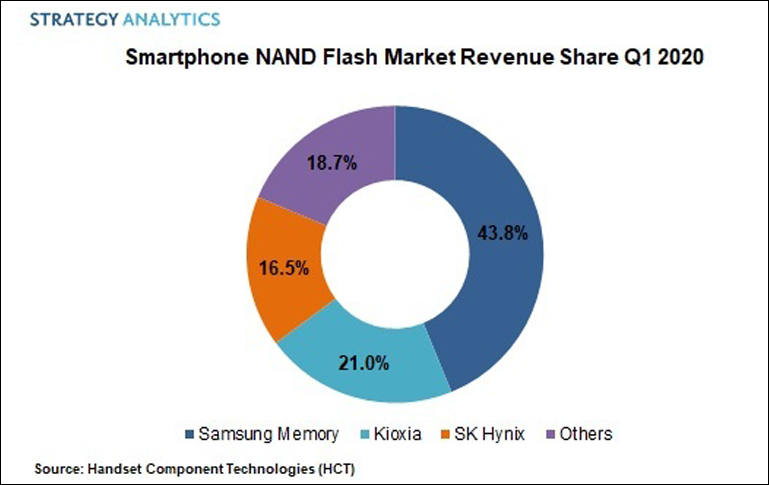
It allows to keep PV going, with more focus towards AI, but keeping be one of the few truly independent places.
-
Samsung’s guidance for its Q3 earnings is in, and the company expects an operating profit of $10.6 billion. That’s up 58 percent from the year before.
Most of this is due to NAND and DRAM cartels that managed to hold prices despite production costs dropped 30-40%.
-
NAND chips price is expected to fall in coming months due to huge surplus that formed after Huawei fiasco. As company not just no longer need NAND memory for their smartphones but manufacturer can't longer supply chips to company or any related entity.
-
Lot of lies in numbers as profits are much much higher, but look at dynamics is useful
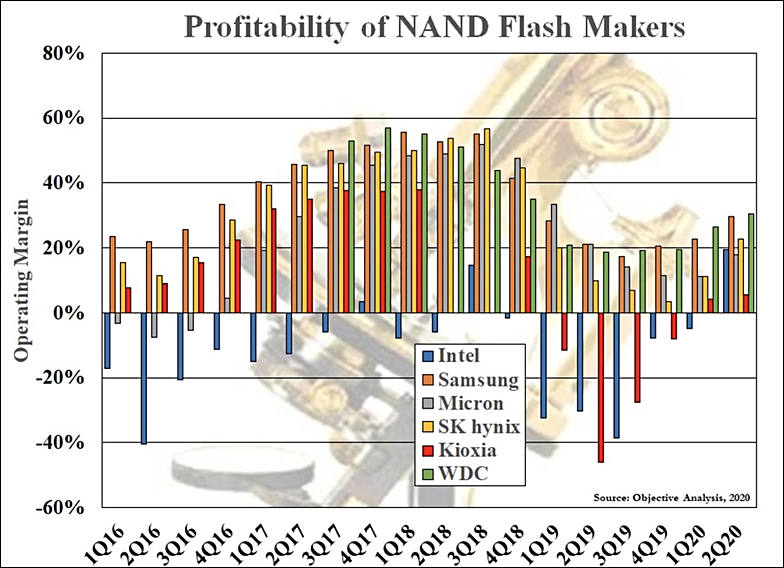
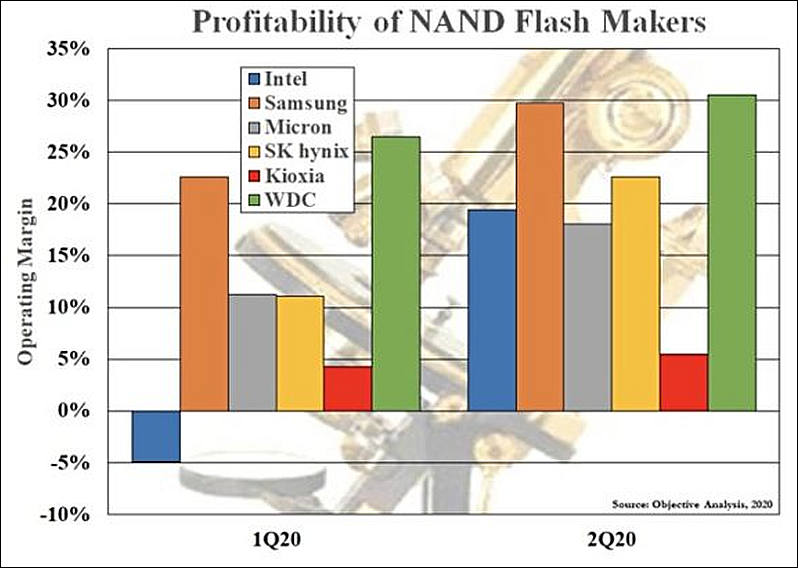

 sa14502.jpg784 x 568 - 90K
sa14502.jpg784 x 568 - 90K
 sa14503.jpg798 x 568 - 65K
sa14503.jpg798 x 568 - 65K -
Some good news
Yangtze Memory's 128-layer QLC flash memory debuts with highest I/O speed
Yangtze Memory Technologies, China's top memory chipmaker under the umbrella of Tsinghua Unigroup, publicly demonstrated its 128-layer QLC 3D NAND flash memory chip at the China Electronic Information Expo held today.
Yangtze Memory showcased a 64-layer, a 128-layer stack of flash memory this time, of which the former is the first 64-layer flash memory developed and mass-produced by a Chinese company. It is based on the Xtacking stacking architecture, and the storage density per unit area is the largest in its class.
At present, the main product of Yangtze Memory's mass production is 64-layer TLC flash memory, which has been adopted by a large number of manufacturers' SSD hard drives.
The 128-layer QLC flash memory shown by Yangtze Memory is the next generation product after 64-layer flash memory, based on the Xtacking 2.0 architecture.
Yangtze Memory revealed that the two products have 1.6Gbps I/O read and write performance, and the single 3D QLC capacity is as high as 1.33Tb, which is 5.33 times that of the previous generation of 64 layers.
-
Kioxia Holdings (former Toshiba Memory) will be listed on Japanese market, Toshiba want to sold most stock to tthird party buyers.
Reason can be lack of funds for required investments to go into 3D QLC and PLC chips.
2021 year must be year of phasing out TLC from the consumer market and replacing it with 128-256 layers QLC memory that must hike profits of leading manufacturers by 1.5-2 times. They are expecting to allow only 10-15% price slide, while write performance will degrade 2-5 times.
-
Smartphones are expected to increasingly come with 256GB or even 512GB of storage in 2020, thanks to brand vendors' launches of new 5G models and a gradual recovery in China's smartphone market,
Manufacturers love making NAND for smartphones, as most of it is slow and bad memory that is sold at 1.5-2x profit compared to faster chips made for NVMe and similar SSDs.
-
NAND flash memory contract prices are expected to stay flat in the third quarter, as demand for notebooks remains stable, according to Wallace Kou, president and CEO of Silicon Motion Technology.
Coronavirus clearly showled how cartel now precisely control prices of NAND and DRAM.
We need biggest legal process, 100% extra profits fines, and 20-30 years of prison for all leading managers for this thing to be remembered.
-
Enterprise SDDs situation
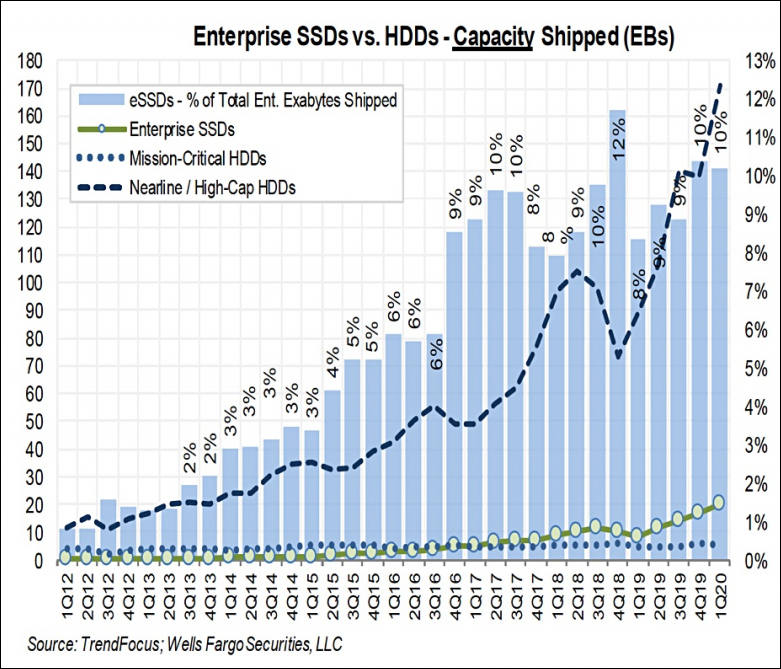
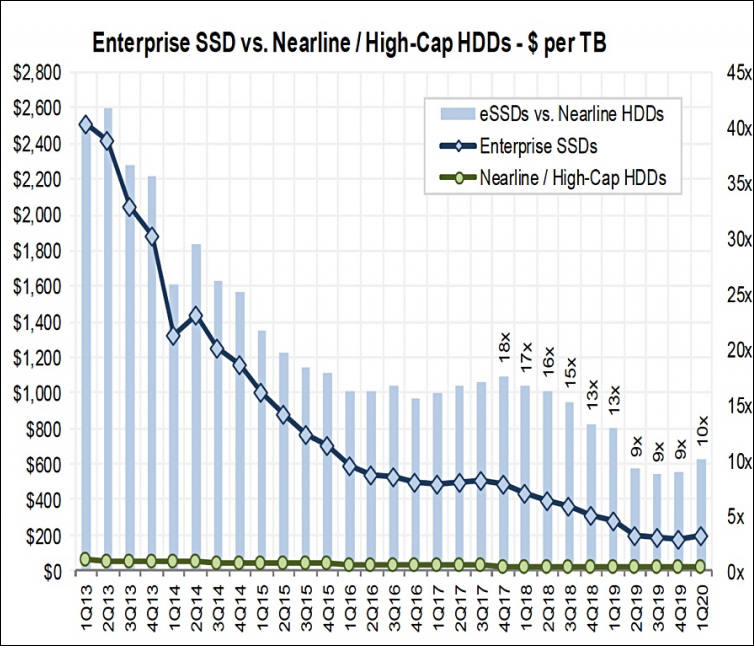
Now how in second chart it is easy to see NAND chips manufactrers cartel actions.

 sa13090.jpg781 x 669 - 108K
sa13090.jpg781 x 669 - 108K
 sa13091.jpg754 x 646 - 95K
sa13091.jpg754 x 646 - 95K -
China-based Yangtze Memory Technologies (YMTC) will be striving to kick off volume production of 128-layer 3D NAND flash chips later this year.
Nice.
-
On April 8, Wuhan officially lifted the lockdown after the new coronavirus outbreak. Many were wondering if the research and development progress of Yangtze Memory in Wuhan had been impacted by the new coronavirus epidemic.
According to the Securities Times, Yangtze Memory CEO Yang Shining said that the research and development progress of Yangtze Memory’s most advanced 128-layer 3D NAND technology was indeed affected in the short term.
However, he said that at the present Yangtze Memory has achieved full resumption of work, and all progress is being pursued. In the medium and long term, the outbreak will not affect the overall progress and the 128-layer technology will be launched as planned in 2020.
It is very bad news for western companies. And it seems like Yangtze had been one of main reasons of why Wuhan had been center of outbreak.
-
Samsung Electronics is striving to lower its SSD inventory levels, a move which has raised concerns about the NAND flash market outlook for the second half of 2020.
I tis very hard to get Samsung SSD now for dealers, delays can cause 2-3 months.
-
SSD retail prices in China have been rising unexpectedly, as channel distributors have become reluctant to sell amid worries about possible supply chain disruptions caused by the coronavirus outbreak
Bad.
-
Yangtze Memory Technologies Co., Ltd. (YMTC), a budding Wuhan-based manufacturer of 3D NAND flash, issued a statement this week, saying that it is taking steps to protect employees. It claims that current operations “are normal and orderly.”
Very handy that it is in Wuhan, don't you think?
-
NAND flash demand for new-generation gaming consoles featuring 1TB and higher-density SSDs is set to grow robustly in the second half of 2020, according to industry sources.
Of course, if you have cartel agreement.
-
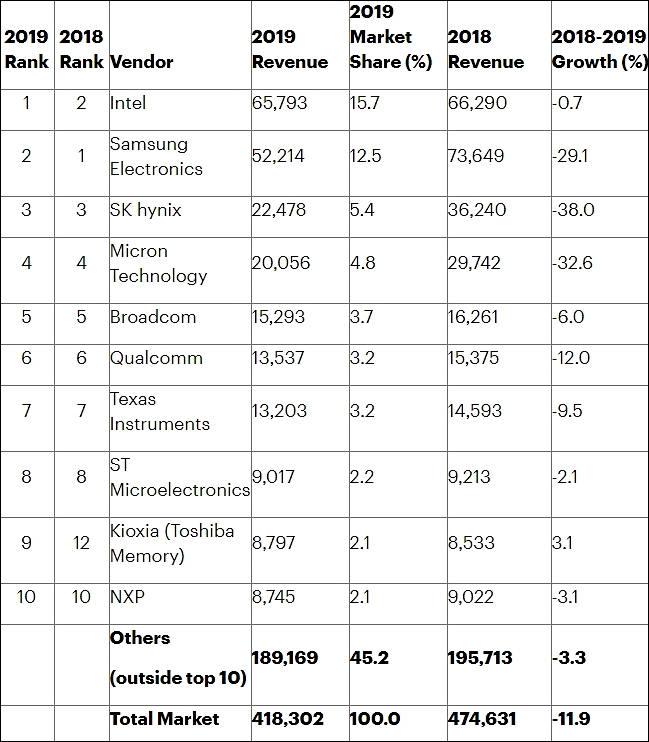
Results of DRAM and NAND prices movements.
Cartel now formed again and things stopped and went back.

 sa11784.jpg649 x 742 - 89K
sa11784.jpg649 x 742 - 89K -
Kioxia fab fire may send NAND flash prices soaring: A brief fire that broke out at Kioxia's Yokkaichi plant in Japan on January 7 may send NAND flash prices surging, according to industry observers.
-
NAND flash contract prices are forecast to rise by up to 40% in 2020, according to sources at memory chipmakers.
"Good" news.
-
NAND flash contract market prices are expected to rise 10-15% in the first quarter of 2020, thanks to suppliers' output controls and a pick-up in demand for datacenter applications
Cartel finally preparing second price wave.
-
Consumer NAND flash memory prices in China have rallied about 3% since the end of November, showing signs of market stabilit
-
Consumer NAND flash memory prices in China have rallied about 3% since the end of November.
-
The memory sector is expected to resume growth momentum in 2020 thanks to steady increase in demand for 5G and server applications, with DRAM and NAND flash to see supply shortfalls (double-digit ones) in second-half 2020, according to industry sources.
-
The global NAND flash memory industry grew 10% in output value sequentially in the third quarter, when bit shipments registered a nearly 15% increase. The industry output value came to US$11.9 billion in the third quarter of 2019, up 10.2% sequentially.
-
Samsung Electronics' NAND flash bit supply growth is expected to drop below 30% and even 25% in 2020, down from 35-40% this year.
-
Watch the methods cartel uses to hold prices from falling further:
Worldwide silicon wafer area shipments totaled 2.93 billion square inches in the third quarter of 2019, down 1.7% from the 2.98 billion square inches shipped in the prior quarter, and 9.9% lower than year-ago levels
My talk show that biggest concern now are Chinese SSD's manufacturers as they almost tripled production of NVMe and other advanced drives and started to wipe out old established companies in OEM PCs and even some countries.
Howdy, Stranger!
It looks like you're new here. If you want to get involved, click one of these buttons!
Categories
- Topics List23,990
- Blog5,725
- General and News1,353
- Hacks and Patches1,153
- ↳ Top Settings33
- ↳ Beginners256
- ↳ Archives402
- ↳ Hacks News and Development56
- Cameras2,366
- ↳ Panasonic995
- ↳ Canon118
- ↳ Sony156
- ↳ Nikon96
- ↳ Pentax and Samsung70
- ↳ Olympus and Fujifilm100
- ↳ Compacts and Camcorders300
- ↳ Smartphones for video97
- ↳ Pro Video Cameras191
- ↳ BlackMagic and other raw cameras116
- Skill1,960
- ↳ Business and distribution66
- ↳ Preparation, scripts and legal38
- ↳ Art149
- ↳ Import, Convert, Exporting291
- ↳ Editors191
- ↳ Effects and stunts115
- ↳ Color grading197
- ↳ Sound and Music280
- ↳ Lighting96
- ↳ Software and storage tips266
- Gear5,420
- ↳ Filters, Adapters, Matte boxes344
- ↳ Lenses1,582
- ↳ Follow focus and gears93
- ↳ Sound499
- ↳ Lighting gear314
- ↳ Camera movement230
- ↳ Gimbals and copters302
- ↳ Rigs and related stuff273
- ↳ Power solutions83
- ↳ Monitors and viewfinders340
- ↳ Tripods and fluid heads139
- ↳ Storage286
- ↳ Computers and studio gear560
- ↳ VR and 3D248
- Showcase1,859
- Marketplace2,834
- Offtopic1,320


